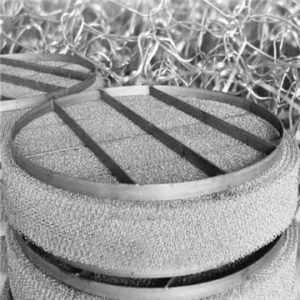Designing and engineering demisters involves considering various factors to ensure their effectiveness and performance in mist elimination. Here are some key design and engineering data considerations for demisters:
Application and Process Conditions: Understand the specific application and process conditions in which the demister will be used. This includes factors such as the type of gas or vapor, temperature, pressure, flow rate, droplet size distribution, and chemical composition. These parameters help determine the appropriate demister type, material selection, and sizing.
Demister Type: Choose the appropriate demister type based on the application requirements and process conditions. Common types include wire mesh demisters, fiber bed demisters, and vane pack demisters. Each type has its own advantages, such as high efficiency, low pressure drop, or resistance to corrosion, so the selection should be based on the specific needs of the application.
Material Selection: Consider the material compatibility with the process environment. Demisters are typically available in various materials, such as stainless steel, high-performance alloys, or special plastics, depending on the corrosiveness and temperature of the process fluid. Material selection should ensure resistance to corrosion, erosion, fouling, and any chemical attack.
Sizing and Geometry: Determine the appropriate size and geometry of the demister based on the gas or vapor flow rate and droplet size distribution. Factors such as pad thickness, mesh opening size, and wire diameter (for wire mesh demisters) or fiber density (for fiber bed demisters) need to be carefully considered. Sizing should aim to achieve the desired separation efficiency while maintaining acceptable pressure drop and gas flow characteristics.
Pressure Drop: Evaluate the pressure drop across the demister to ensure it falls within acceptable limits for the system. Excessive pressure drop can impact overall system performance and require additional energy for gas handling. The pressure drop is influenced by factors such as the demister type, pad thickness, mesh density, and gas or vapor velocity.
Efficiency and Performance: Evaluate the demister’s expected separation efficiency based on the droplet size distribution and process conditions. Demister efficiency is typically expressed as a percentage, representing the fraction of liquid droplets removed from the gas or vapor stream. Demister vendors often provide performance data based on laboratory testing or empirical correlations.
When designing and engineering demisters, it is crucial to consult manufacturers or experts in the field to ensure the selection and sizing align with the specific process requirements and performance goals. Please contact with Ourun Wire Mesh for more details.
